"The simple fact of existence, of being aware that you are aware; this to me is the most astounding fact." -William Hurt
It's amazing how quickly a week can go by, yet equally amazing how much a week can contain. First the first time since we've begun having contributor posts here at Starts With A Bang, we had not one or two, but four of them this week, resulting in one of the most fruitful sets of articles we've ever had. Here's what went down (and what you should catch up on, if you missed anything):
- Could you crawl out of a black hole? (for Ask Ethan),
- Why cons matter (for our Weekend Diversion),
- Volcanic Lightning (for Mostly Mute Monday),
- Do all planets rotate in orbit around their stars? (an Astroquizzical by Jillian Scudder),
- How special is the solar system? (contributed by Brian Koberlein),
- The most wanted particle (a live-blog of Jon Butterworth's Perimeter Institute lecture),
- Battle of the Nobel Laureates (a special from Paul Halpern),
- Could black holes destroy the Universe? (by Sabine Hossenfelder), and
- The most astounding fact about the Universe (for Throwback Thursday).
That's an awful lot, but it's also presented you with plenty of opportunities to chime in, and you did! Let's dive on in to your Comments of the Week.
Image credit: Mark Garlick, via http://ngm.nationalgeographic.com/2014/03/black-holes/finkel-text.
From Wow on skirting the event horizon of a black hole: "[I]nstead of thinking of someone inside being pulled out by someone else on a strong piece of string,think of a composite body whose centre of gravity is outside the event horizon, but whose physical extent is nonzero and therefore it extends part of itself inside. Making the assumption that the tidal forces are not so severe as to rupture any part of the chemical binding of the object."
The tough thing is this: if you're skirting the event horizon, you're outside of ISCO, or the innermost stable circular orbit. What you propose is only realizable if you want an extremely eccentric ellipse, a parabolic or a hyperbolic orbit at very fast (possibly needing relativistic) speeds, where the center-of-mass comes really close to the event horizon, but remains outside.
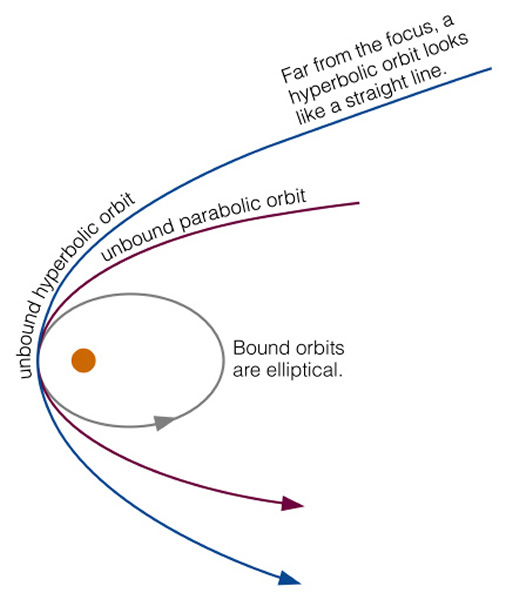 Image credit: J. Scott Shaw of Georgia, via http://www.physast.uga.edu/~jss/1010/ch4/ovhd04.html.
Image credit: J. Scott Shaw of Georgia, via http://www.physast.uga.edu/~jss/1010/ch4/ovhd04.html.
And what you then want is to say, alright, I want a small amount of this finite object to go inside the black hole's event horizon. Of course, I think what you're hoping to do is skirt the laws of relativity somehow, because you've set up a very massive black hole with low tidal forces and a small, compact object that's tightly bound together. As it turns out, there are only three possibilities (I can work out) for what will happen:
- Tidal forces will tear the object apart, and the part that goes inside the event horizon is doomed, while the part that remains outside can remain outside.
- The part of the object that grazes inside the black hole will be inexorably drawn towards the singularity, and so will pull the rest of the object in if the chemical/nuclear bonds don't break. Center-of-mass doesn't mean what it used to when your space is curved enough.
- The object itself is so dense that it can significantly distort space as well, changing the shape of the event horizon as it passes so that the entire object remains intact and outside the radius-of-no-return.
I believe, for the examples you gave, you're looking at situation #2, and so total doom it is. A fun thought-experiment, but let's keep it as a thought-experiment, please!
From BenHead on the Con experience: "It was 20 years ago this summer that I attended my first con – AnimeExpo95, for which I flew all the way across the country. And yeah, it was absolutely amazing to me, to be completely surrounded by people who were as big fans of something weird as I was, instead of being that one, or even one of those few, in my everyday life."
And from Double Shelix on her Con experience: "Were it not for Gencon, i doubt i ever would have overcome my social anxiety, had meaningful friendships and dating relationships, accepted my rubenesque self as being semi-attractive, agreed to take on a direct report at work, or had the bravery to try out for roller derby 5 years ago thus resulting in me now being a league owner."
Here's the thing: your mileage is going to vary. What you get out of a Con is going to depend on a lot of factors, some of which are within your control and some of which aren't. BenHead and I were very good friends when he went to AnimeExpo95, and although I didn't share or understand his level of love for Anime, I was happy for him, as his friend, that he got to have that experience and that it meant so much to him.
I think that one of the things we often forget to value -- amidst things like careers, money, family, and material things -- is our own happiness. Is doing the things and having the experiences that impress themselves in our memories, that transform us on the inside and make us feel like we're ok in this world. Don't be afraid to spend some of your time and money on those things, and I think you'll be pleased, if you do, at the garden of new growth you find sprouting inside of yourself as a result.
From Michaela van Rooyen on Volcanic Lightning: "Is the volts of a natural electric thunderstorm more or less than a volcanic lightning?"
The big thing that it's dependent on, believe it or not, is only distance. The natural breakdown voltage in air is somewhere around 30,000 Volts per centimeter, and so if you consider a typical thunderstorm, where lightning needs to travel for around a kilometer or more, you're talking literally GigaVolts, or billions of volts. Volcanoes are incredibly impressive, to be sure, but you typically don't have lightning extending for distances quite that large.
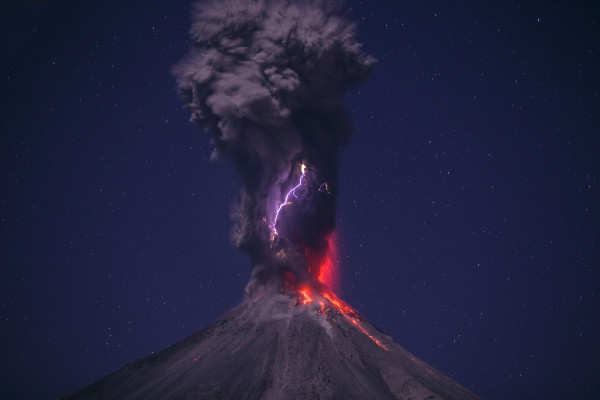 Image credit: Cesar Cantu, via https://www.facebook.com/cesar.quiroga.75685?fref=ts.
Image credit: Cesar Cantu, via https://www.facebook.com/cesar.quiroga.75685?fref=ts.
For typical volcanic lightning events, we're talking about distances that are maybe only about 10% the discharge distance of thunderstorms, and so the voltage is much lower. But it's still spectacular, it's still an incredible amount of electrons, and it's still one of the most fascinating sights that humans can witness here on Earth.
From Sean T on the Earth's rotation: "I would think it’s actually impossible for the rotation of the earth as seen from above the north pole to be anything other than “clockwise”. We make clock hands go clockwise precisely because that it the direction that the shadow in a sundial moves. It moves in that direction because of the direction of the earth’s rotation. If the earth rotated in the opposite sense, we would define the direction we now refer to as “counterclockwise” as being “clockwise” instead."
Be very, very careful about this. It's true that we defined "clockwise" as the direction it is because that's what shadows on a sundial do in the northern hemisphere, moving from the (west) left to upwards to the "noon" position to downwards to (east) right over the course of a day.
But this is because the Earth spins counterclockwise as seen from the North Pole, and hence the apparent motion of the Sun's shadow as seen from on Earth is opposite to our actual motion through space. Clockwise is defined as clockwise because our Earth spins exactly in the opposite direction from that definition.
The bigger question should be why clocks aren't mirrored in the southern hemisphere!
Also from Sean T on the "specialness" of our Solar System: "How much does selection bias affect the conclusion that our solar system is unique. IIRC, it’s much easier to detect planets that are closer to their parent stars and it’s easier to detect more massive planets. This seems to be borne out by the statistics on the confirmed planets as shown in the figure in the article. If I did the math right, approximately 93% of the confirmed planets are “superterrestrials” or heavier (126 out of 1812), and approximately 80% (361 out of 1812) are in the hot zone. Would we be able to reliably detect a solar system that is like ours?"
We worry that the answer may be "a lot". The number of Earth-sized planets around M-stars (red dwarfs) is pretty large; the number around G-stars (like ours) is tiny. But is this because we're rare? Maybe... or it may be because detecting things like us is hard! Most of these planets were detected via transit or stellar wobble methods, and the magnitude of the effects are practically an order of magnitude larger for the smaller stars.
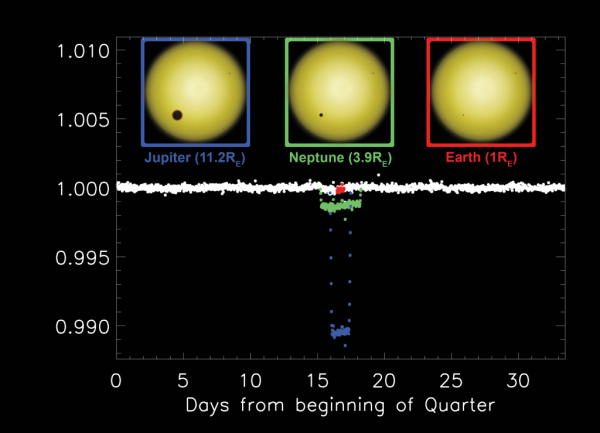 Image credit: Zooniverse / K2 project / PlanetHunters, via http://www.planethunters.org/.
Image credit: Zooniverse / K2 project / PlanetHunters, via http://www.planethunters.org/.
We are still suffering heavily from the effects of selection bias: we're seeing far more of the things that are easier to see. When the next generation of planet-hunting technology comes along, I think very few people would be surprised to see more rocky worlds farther out and around more massive stars, and quite possibly many more solar systems like our own. I think we'll also learn an important distinction that we don't know just yet: where the line between a rocky world -- a Super-Earth -- and a world with a significant hydrogen+helium envelope -- a mini-Neptune -- actually is.
There's more science to be done, and this is part of why we do it!
From PJ on the Most Wanted Particle: "Perhaps we are in the world of anti matter, but just don’t realize it."
But now that you've realized it, did you just collapse the wavefunction of the Universe?
The answer to both our questions is "no." The reason is that your question was about an arbitrary definition, but we made the definition and now it's there. (The same way positive charge carries current.) We can change the definition, but it doesn't change the Universe.
The reason the answer to my question is "no" is because the realization of PJ's wasn't entangled with anything. He was April Fool-ing us from the get-go.
From Michael Kelsey on clarifying how quantum mechanics transitions to the classical world: "Taken at face value, QM predicts exactly what you describe: as you add elements to a system, the wavefunction gets more and more complex, but those added elements will become part of the superposition.
What we seem to have discovered, or at least the consensus interpretation, is that the “weird superpositions” disappear (or are projected out) via uncontrollable and unmeasurable interactions with the environment. Yes, _if_ you could track and measure all the molecules of air around you, etc., etc., then you’d end up with a macroscopic superposition state. But you can’t do that, and so the density matrix ends up in a block diagonal form because the off-diagonal correlations get averaged away.
We don’t use the term “collapse” any more. The modern description is that the wavefunction can be written as a sum of basis vectors (like x, y, z coordinates), and decoherence projects out one of those bases."
This is an excellent explanation, and so I'm reprinting it here without further comment, except to say that if you actually ran the Schrodinger's cat experiment, the cat itself would never be in a superposition of dead-and-alive states. It, itself, counts 100% as an observer and collapses the wavefunction, or if you prefer, it decoheres from the quantum world almost instantaneously.
From Omega Centauri: "So if this speculation if correct, when the first BH manages to evaporate, the transformation to a whole other type of universe (without us) begins. Is the phase change velocity restricted to the speed of light?"
This is a good question! Consider the transition, and consider that it happens somewhere in the Universe. Does the "bubble" transition propagate at the speed of light? Or does it propagate much more quickly through space?
In most scenarios, it's actually the former -- the speed of light -- so unless this happened within a few billion light years of us, it'd never reach us. But when it did... it would reach us in a matter-destroying wave, and we'd never see it coming! But if it happened, say, now, but 20 billion light years away, we'd forever be safe... and also we'd never know about it, at least, not until a black hole closer to us evaporated and had the transition occur.
What a strange Universe!
Image credit: The Hydrogen Epoch of Reionization Array (HERA), via http://reionization.org/.
And finally, from Sarah McMurtry on the most astounding fact: "It is quite comforting to know that the fundamental laws of nature are constant everywhere in the universe, seeing as we know so little about it despite having discovered so much about it over the past few decades. It seems the more we find out, the more we know, the more we find out we do not know. The universe is so unbelievably large and complex I wonder if humankind will ever find out everything about it. But it is both good and exciting to know that we can rely on the laws of nature, that particles and energies are the same universally, to learn more about the universe. We can now trust that our experiments and viable ones, because we have controlled variables, knowing that the fundamental laws of nature are the same everywhere. That is a great and encouraging thought!"
I like to think that stories like this -- that facts like this -- help remind us all that we all share the same story when it comes to the Universe. We all share the same laws, the same history, and for most of us at some point in our lives, even some of the same particles. We are bound together by the story of the Universe, and we can learn that story simply by asking the Universe questions about itself.
We've come this far together, and there's so much farther to go. Let's see how far we can get, and if we're lucky, we'll all get there together. Thanks for a great week, and here's looking forward to another one!
- Log in to post comments



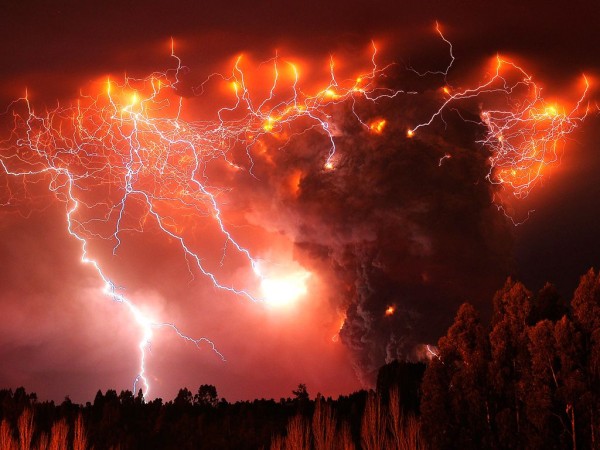
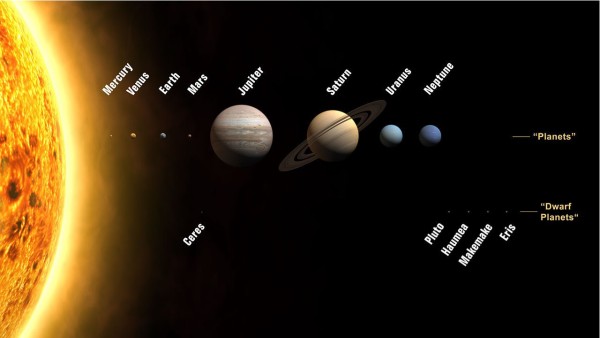

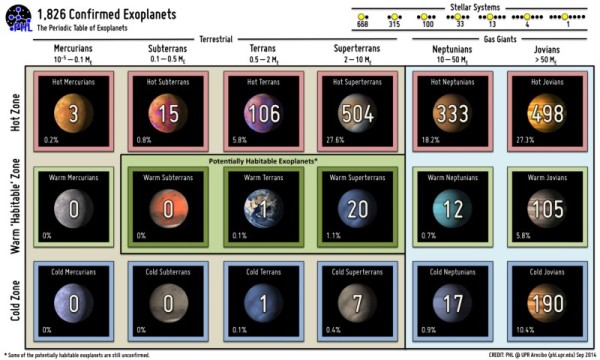
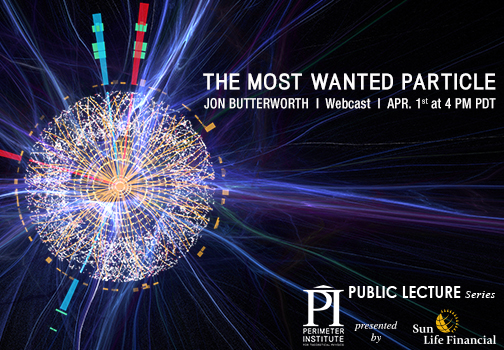
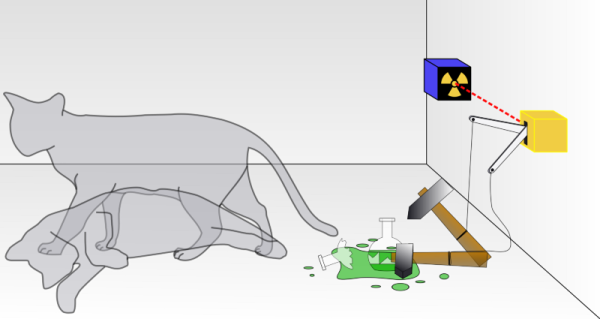
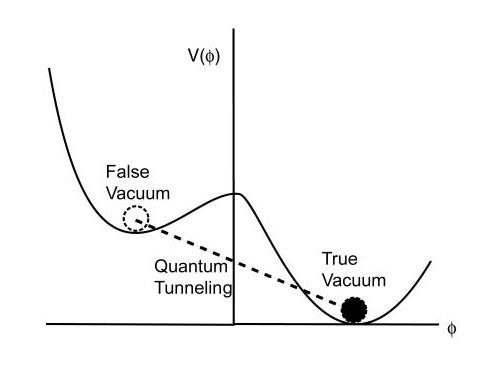
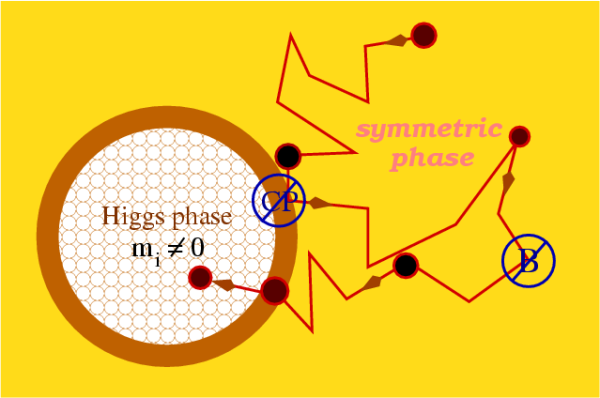
At last! I've been saying for years that Schrodinger's Cat is itself an Observer. Now someone else, who knows his stuff, says the same.
I've been saying something else too that is noyt quite the same, and probably not at all if the cat is an Observer - but if the cat is part of a quantum level system, then its position is also subject to quantum factors - i.e. it could tunnel out of the box.
Ethan: I'm trying to understand General Relativity. Because I don't really get the math I tried some derivation. Please tell me if I'm fight or where I'm not:
1)
Light leaving a gravity well is frequency shifted to longer wavelengths -- the light is loosing energy
2)
thus the time inside the gravity well is slower than outside
3)
The scalar product of the 4-vector with itself is constant for all observers: r^2-(ct)^2=constant. Since local time is different for the observer outside the gravity well than inside, we can also calculate a different r^2 for both observers. Does this represents the curved space?
"right" -- not "fight"
It isn't thus. Just drop the thus off.
http://dictionary.reference.com/browse/thus?s=t
I was using "thus" according to point 3.
@Peter Foelsche #2: It's really hard to do GR without math. It's formulated as a tensor differential equation, and really can't be understood quantitatively otherwise. We can do all kinds of analogies and metaphors, but they will all have some shortcoming or other, which the harpies will latch onto :-(
1) Yes, this is correct. Just as a material object like a ball loses kinetic energy moving upward, so does light.
2) I'm not sure your (2) follows from your (1) (which is how I interpret your use of "thus"). The statement is true, both for gravity and also for accelerated vs. non-accelerated frames in special relativity.
3) I think this is a reasonable way to approach the idea of curved space. The _interval_ (r^2 - t^2) is invariant. In an accelerated frame (or in gravity), t and r both transform to t' and r' in such a way as to keep the invariant fixed. Since the acceleration equivalent to gravity varies from point to point, you get a varying r' (t'), and hence curved space(time).
Peter, the thus was between point 1 and 2, therefore cannot have been regarding point 3.
Please stop lying.
Can black holes increase in size? if yes, what would cause its increase?